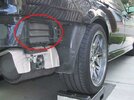Have they already delivered to non-employees?
I see sandy has one but he could be a contractor somehow?
I think the thing many are looking at is whether or not the COGs for cybertruck get added to balance sheet in Q4 vs Q1. Was reading here I believe a note by
@The Accountant that if the deliveries in TX and CA in December are at all to non-employees that it would trigger the COGs to be added for the R&D Q4 vs sometime in Q1.
I’m curious if employee deliveries payments and units sold are counted to the bottom line?
Where are we at with all of that and how might it effect EPS?





